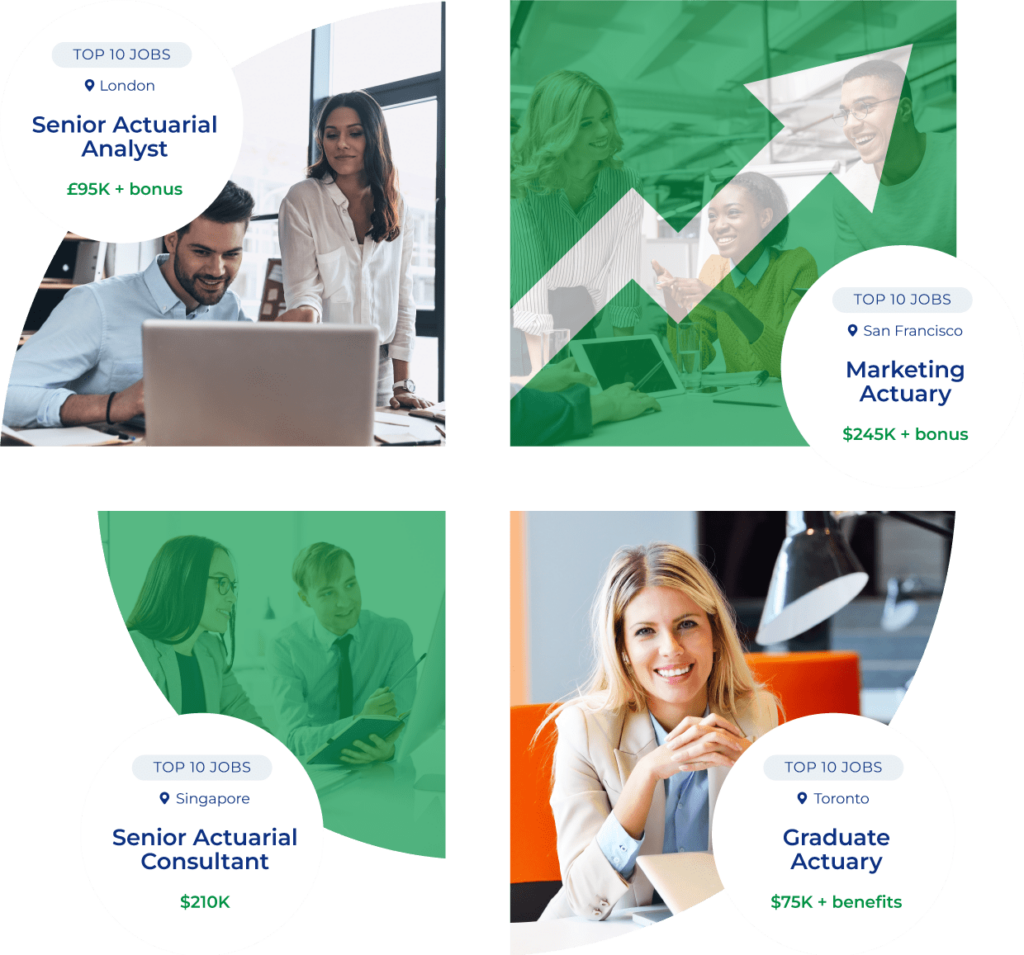The Last Actuary
The church was packed.
Hundreds had gathered to pay their respects.
As the eulogy was being read out, my thoughts began to drift. My father was loved. Eccentric and slightly odd in his ways, but very intelligent and, most importantly, he always acted with complete integrity. Whether it was work, family or community related, he put integrity at the core of his approach. He partially thanked his chosen profession for instilling in him the importance of integrity in how he conducted his life.
These attributes had served him well, judging by the vast crowd of friends, family and former work colleagues that had gathered to say their last goodbye.
The church minister was humorously explaining to the silent crowd how my father had accurately predicted the exact week of his death—no doubt using the tools and expert judgement he had become so proficient in when he was working as an actuary.
Born in 1968, he had certainly had a good life, dying just 3 months shy of his 119th birthday. As the eulogy progressed, I became more and more intrigued about the profession that my father had made such an impact upon and that he had clearly loved.
When he finally retired as an actuary, in 2038, the actuarial profession had also literally died a death.
I vividly recalled father speaking with passion at his retirement dinner. A poignant moment of his retirement speech, that remained with me, was when he was shaking his head, showing tangible regret and disappointment, as he talked nostalgically about his career as an actuary.
He had discussed how times, and in particular the business world, had changed drastically. Eventually making his actuarial skills and profession obsolete.
Technology and data had been the driving forces of change and, as father used to say, these same drivers should have been what propelled actuaries and the actuarial profession to greater heights. Instead of towards oblivion.
But it wasn’t just the actuarial profession that had vanished. Paralegals had disappeared, doctors were pretty much gone. All victims of technology advancements and the merciless artificial intelligence (AI) algorithm. Even household maids were a thing of the past as robots took care of cooking, laundry, and other household chores.
The fuel behind AI was data, algorithms, and smart individuals. Father had, therefore, felt that actuaries were well placed to play a key role in the emerging paradigm. Particularly given the pressing need to consider the ethical and regulatory implications – unique knowledge and insights which actuaries should have been able to contribute.
The New World
On my way home from the funeral I again began to think about the world we now lived in and the prophetic words father had uttered towards the end of his actuarial career.
My car was traveling at speed as I lay back in my seat and closed my eyes, safe in the knowledge that my autonomous vehicle would have me safely home at exactly 17.05. Technologists had finally overcome the moral and legal issues with self-driving cars and they were now of course ubiquitous bar the occasional hobbyist manual driver, that was confined to the ‘leisure only’ roads. It seemed strange to think of a time when the majority of people actually drove themselves from place to place and thus took on the potential liability of damaging someone else or their property.
Father, of course, had tried to warn his fellow actuaries that this new reality would have drastic repercussions for the many P&C actuaries. Risks and liabilities still remained, but they had shifted from the driver towards the manufacturers of the cars and their parts (e.g., sensors). As human input had all but disappeared from the driving experience, cutting out the 90% of risk previously caused by human error, risk and liability had also transferred to the producers of the software used to make the AI driven decisions as well as those responsible for building the transport routes and networks on which the driverless cars operated.
My father had been one of the more outspoken actuaries of his time, calling for widespread changes and a need to grasp the opportunities that were arising in the new digital and technology-focused world. If only other actuaries had listened to his advice, instead of laughing at his claims of the potential end of the profession, perhaps the actuarial profession would still be alive.

As I arrived home and walked through my apartment door, my retina mail immediately downloaded via my permanent e-contact lenses. The e-letter was from my employer pension fund provider showing that my crypto and equity investments had passed the $5,000,000 mark and according to my personal investment chat-bot it was now time to start moving towards bonds to lower the fund volatility, given my planned retirement age of 86.
Scrolling further through the letter, using 2 successive blinks from my right eye, the sophisticated AI powered algorithms informed me that my expected death was still 112 with a 90% level of confidence.
I recalled father telling me how his first actuarial job involved calculating the liability for an employer’s pension scheme where the employer made a promise to pay out a pension which was a fixed percentage of each individual’s final salary. I wasn’t sure if he was joking or not when he told me about this strange type of pension scheme, but a quick retina search revealed that these so-called “defined benefit” pension schemes had indeed existed and had kept many actuaries in work for a number of years. How times had changed!
My trail of thought was interrupted by my fiancé announcing that dinner was now ready. As I sat down to eat, the digital counter on the kitchen table automatically showed the exact amount of calories and breakdown of protein, fats and carbohydrates I was about to consume. Of course, this information would be automatically relayed to my insurer, Baidu, and a quick glance at the figures told me that my health premium score wouldn’t be adversely affected.
It had been a bad few days, since father’s death, as far as my real time health insurance premium was concerned. My usually well-organized diet had suffered and my implanted glucose sensor’s historic data showed that I had been eating a lot of sugar heavy meals. As a result, my automatically calculated fasting glucose had crept over 100 mg/dL this morning, which had implications for my health insurance premium.
But worst of all, my jewellery sensors had picked up the emotional stress response from having to drop everything and help with funeral arrangements whilst also dealing with the emotional shock that father was no longer with us. Despite his accurate predictions about his death and recent humorous quip that the trustees of his employer’s pension scheme would be “jumping with joy” with the fact that another one of their scheme’s actuarial liabilities was now extinguished, the news of his death still came as a blow, as if out of nowhere, and I could see the toll it was taking in cold hard stress figures.
A New Insurance Paradigm
Blockchain
All this health-related data was feeding directly into the autonomous blockchain enabled insurance company where the machine learning algorithms predicted my health risk with near 100% accuracy.
Ubiquitous blockchain proliferation had occurred. Not by 2025 as the hype had suggested, but by 2035 the exchange of value across the world was facilitated by the irrefutable and distributed technology.

Smart contracts were set up and utilized with ease which had led to a gain in trust in both the banking and insurance industries. Middle-men were a thing of the past. Unnecessary friction across nearly all services and transactions had now disappeared.
Adverse selection was also a thing of the past, as individual insurance risk predictions were now completely specific and accurate to each individual, ensuring that the insurers were not impacted by potential asymmetry of information.
Hence, bad risks were no longer being subsidized by the “good risks”. The traditional insurance pooling of risk no longer existed as every insured individual was accurately assessed on a completely personalized granular level. However, lack of pooling had created wider societal problems as the poor risks in society were now finding it very difficult to get the necessary cover.
Insurance companies had also changed in many other ways:
Baidu now had 90% of the global insurance provision market share, as they had leveraged off their advanced analytics and strong customer loyalty and engagement. Everything had moved from static to dynamic and real-time. From purchase and annual renewal to continuous offerings and interactions.
Data availability was ubiquitous with sensors everywhere feeding in voluminous data cheaply and easily for the sophisticated and automated algorithms to perform complex and extremely accurate calculations, which had moved beyond the realm of human understanding.
Wearables, social media, geolocation, weather and news were just some of the real-time data continuously feeding into insurer’s dynamic blockchain enabled data systems, where AI was doing the work previously done by actuaries.
A Shift to Prevention
My own insurance company acts not only as a financial security blanket but also a valued trusted advisor. The insights and health information it provides me on a daily basis has truly helped to overhaul my health behaviors and constantly nudge me in the right direction with alerts and monetary motivations.
The fact that all my coverage comes from a single provider, where I also get nearly all my other digital services, has meant that my customer experience is drastically efficient and simple. They even provide me with new unique bespoke personalized and dynamically priced products based on my changing needs.
Manual underwriting no longer exists. Claims processing is fast, accurate, cheap and efficient. Fraud is almost non-existent as the data and algorithms, delving into online social data can spot them with ease.
Everything is frictionless. The industry has shifted largely to one of prevention, risk monitoring and mitigation. I enjoy interacting with my insurer as they provide such valuable information that is provided in a clear simplified format. I truly trust that they will provide the necessary claims and/or advice should I need to call upon them at any point.
A World of Actuarial Opportunities
My father had foreseen these changes and viewed them as being catalysts and opportunities for actuaries to “move up the value chain” adding value in innovative creative ways, completely outside traditional actuarial work. His view had been that creativity, flexibility and the ability to innovate and reinvent oneself were going to be key skills for the future. He spoke about the need for actuaries to embrace technological changes.
His message to actuaries of the future also included:
- The need for actuaries to become more creative as new data sources and complex risks continued to appear and evolve.
- The need for actuaries to evolve their mindsets so that perpetual ongoing learning was viewed as being very important for actuaries to not only thrive, but survive.
- Barriers to entry will reduce in the future. Actuaries would no longer be protected, to the same extent, by credentials from exams and by regulatory work. Actuaries must ensure they are always adding value and remain focused on the needs of employers and their customers.
- As part of being flexible and continuous innovators, actuaries must learn to work in diverse teams that often take an agile experimental approach to new problems which would involve failing fast and iterating as necessary.
- As key members of these diverse agile problem-solving teams, actuaries would, at times, be expected to apply their specialist knowledge but they would also need to be able to act as generalists with an ability to see the bigger picture and to connect people and ideas.
Many of his fellow actuaries, unfortunately, thought he was being dramatic with such views. Actuaries don’t need creativity they claimed. Technology and AI is over-hyped they retorted. We are protected by impermeable barriers to entry they countered. However, risk and corporates had evolved and changed so quickly that father’s warning about creativity and flexibility being some of the most important attributes an actuary of the future could possess, did indeed seem prophetic.
As he had forewarned, AI and technology had indeed penetrated every nook and cranny of business and an actuary’s traditional world. Anything that could be easily automated had fallen prey to the majestic combination of AI and technology. Those that failed to embrace the fourth industrial revolution had indeed been left behind.
Hindsight, of course, as all actuaries know is a wonderful thing.
The Merciless AI Onslaught
As I brought up the the news on my e-retina I was greeted by some uplifting positive news. The new president of China and free leader of the world was speaking at an address and the support from the crowd was palpable.
Politics had moved on in leaps and bounds over the last decade and of course had changed immeasurably since the spectacular collapse of America, in 2032.
President Wò sēn was everything a nation could hope for in a leader – completely altruistic, non-biased, 100% committed to the good of the people and more intelligent and rational than any president that had gone before him.
This was, of course, no surprise. President Wò sēn was after all an artificial intelligent robot. What began as a joke (“Watson For President”) in 2016 had set in motion the wheels towards the current reality. Surprisingly, the vast majority were embracing the new efficient world order where national decisions were based on terabytes of historic data, aided by quantum computers that had all but replaced traditional binary computers.
The results were difficult to argue against. World crime was now down 15%, healthcare costs were down significantly as chronic conditions were recognized at an early stage and patients had the means to understand their conditions and treat themselves much of the time.
The world had truly changed from father’s time. Those that adapted had flourished. Those that were complacent had struggled. Unfortunately, actuaries fell into the latter category and were now a thing of the past.
Concluding Thoughts
I should finish by saying that I actually don’t think that the actuarial profession will die a death. I believe there are too many talented and intelligent people in this profession for us to lose our relevance and for actuarial obsoletion to become a reality.
However, despite our many strengths, I do have the view that we are entering an era where the world of work will continue to change at a rapid rate.
Increasing connections, technology, digital information and ideas are leading to exponential change throughout the world in many ways, whether we like it or not.
To use a metaphorical quote from Malcolm X:
“The future belongs to those who prepare for it today.”
As a profession, whose very existence is based on the premise of being skilled at predicting the future and dealing with risk, let’s not fail in these regards, at this very important juncture.
This essay was awarded an “Honourable Mention” in the Society of Actuaries’ Actuarial Innovation and Technology Essay Competition in 2020. It has been republished here with kind permission from the Society of Actuaries. The original essay and other entries can be read in full here.


